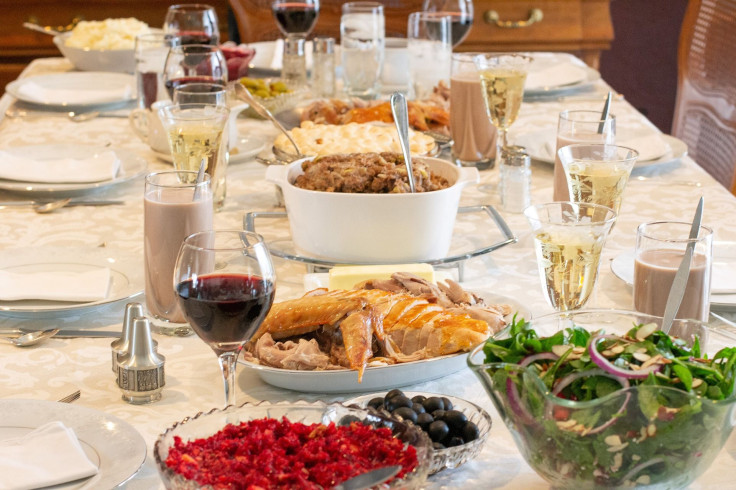The 400th Anniversary Of The First Thanksgiving

Thanksgiving is a time when American families gather to enjoy a bountiful meal and give thanks for everything they have. It's a tradition that is four centuries in the making.
This year marks the 400th anniversary of the first Thanksgiving, which was held on Nov. 25, 1621, when the early Pilgrim settlers and the Wampanoag Native Americans broke bread.
After sailing across the Atlantic Ocean on the Mayflower to avoid religious persecution and arriving in Plymouth, Mass., in 1620, half the Pilgrims did not survive the brutal New England winter. In March, the Pilgrims met Squanto, an Abenaki Native American who greeted them in English.
Squanto taught them how to harvest crops, fish and extract maple from the trees. He also helped the settlers forge an alliance with the Wampanoag Native Americans.
It is debated whether the Pilgrims and the Wampanoag had turkey on the first Thanksgiving with the likely meal being geese and ducks, while the Wampanoag contributed venison, along with fish, shellfish, and beer. The men fired guns, ran races, and drank beer while feasting for almost a week.
The U.S. Continental Congress designated at least one Thanksgiving day a year, and then-President George Washington issued the first Thanksgiving proclamation in 1789 to commemorate the end of the Revolutionary War and the ratification of the Constitution. However, Southerners were slow to adopt the custom that originated in New England.
Sara Josepha Hale launched a campaign to make Thanksgiving a national holiday. For the 36 years she published editorials and sent letters to senators, governors, and presidents asking them to make Thanksgiving a holiday, earning her the nickname the “Mother of Thanksgiving.”
Finally, on Oct. 3, 1863, then-President Abraham Lincoln heeded her request to try to “heal the wounds of the nation” from the Civil War by establishing the first official Thanksgiving on Thursday, Nov. 26, 1863.
The holiday was scheduled for the last Thursday of November until 1939, when then-President Franklin Roosevelt decided to push the holiday up a week to help with retail sales during the Great Depression.
The tradition of playing football on Thanksgiving began with Princeton vs. Yale rugby game in 1876. The NFL began its yearly tradition of Thanksgiving football since its inception in 1920. The Detroit Lions have hosted Thanksgiving Day games since 1934, and the Dallas Cowboys since 1966.
Parades have also been a Thanksgiving Day staple since the late 1800s. The most famous parades have been the Gimbel’s Department Store parade beginning in 1920 in Philadelphia, and the Macy’s Thanksgiving Day parade beginning in 1924 in New York City.
Turkey did not become a holiday staple until the 19th century, when Hale wrote a novel in 1827 titled "Northwood," where she romanticized the perfect New England Thanksgiving with a roasted turkey “placed at the head of the table.” Today 90% of American families enjoy eating the bird whether it is roasted, baked, or deep-fried.
Other traditional Thanksgiving foods include corn, stuffing, mashed potatoes and gravy, cranberry sauce, pumpkin pie, and much more. Presidents began sparing turkeys with President Kennedy in 1963, just three days prior to his assassination. The first official turkey pardon began with then-President Ronald Reagan in 1982, a tradition that continues today.




















